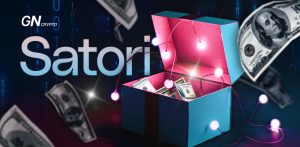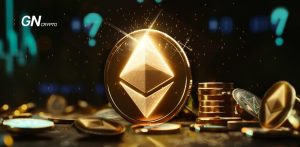Fed’s Testimony Before Congress: Key Takeaways

On June 21st and 22nd, the U.S. Federal Reserve gave an account of its performance in the area of monetary policy. This semi-annual event takes place in the form of a hearing before the U.S. House of Representatives’ Financial Services Committee.
On this page
These hearings traditionally center around discussions of various financial indicators that influence the Federal Reserve's decisions about the federal funds rate. This time, however, the topics of stablecoins and Central Bank Digital Currencies (CBDCs) were also addressed.
So, what's happening with the federal funds rate?
As we know, in June, the Federal Reserve opted to hold off on raising the federal funds rate, leaving it at a level of 5-5.25%. Nonetheless, the Federal Open Market Committee (FOMC) expects to see this rate increase further by year-end.
Federal Reserve Chair Jerome Powell stated:
“We don't want to do more than we have to…Overwhelmingly people on the (Federal Open Market) Committee do think that there's more rate hikes coming but we want to make them at a pace that allows us to see incoming information.”
Therefore, Powell emphasized that the central bank will proceed with utmost caution in adjusting the federal funds rate, as policymakers edge towards a stopping point. The pause during the last Federal Reserve meeting was initiated to gauge the impact of the current federal funds rate on the economy, as the effects are felt with some delay.
Let's not forget, the Federal Reserve remains unwavering in its objective to attain a 2% inflation level. At present, this rate stands at double the target.
Jerome Powell at the hearing before the U.S. Congress Source: YouTube
The Federal Reserve Recognizes Stablecoins as Monetary Assets
Jerome Powell, the Chairman of the Federal Reserve, expressed his thoughts on stablecoins, declaring:
“We do see payment stablecoins as a form of money, and in all advanced economies, the ultimate source of credibility in money is the central bank.”
Powell highlighted the need for a substantial federal role in regulating stablecoins, marking a divergence from the approach proposed in a Republican bill. This proposal intends to delegate regulatory authority over stablecoins to the individual states.
Notably, this proposal is set for review in July. Initial discussions for amendments will precede voting. Before it becomes law, the proposal must receive backing from Senate Democrats and President Joe Biden.
Currently, Democrats have shown skepticism towards this bill, foreseeing a potential scenario where stablecoins, once authorized in one state, could spread nationwide, regardless of the regulatory stances of other states.
Federal Reserve's Perspective on CBDC
In his Congressional testimony Jerome Powell also shared his perspective on Central Bank Digital Currency (CBDC). In response to concerns regarding potential breaches of privacy in transactions involving a digital dollar, Powell acknowledged such a risk, while emphasizing that the Federal Reserve does not endorse this approach.
Powell clarified that the central bank is still far from making a decision on launching a CBDC. He stated that if a digital dollar were to be introduced, it must be developed in a way that protects financial confidentiality and does not replace the existing financial system.
Additionally, Powell indicated that the Federal Reserve does not intend to handle retail transactions directly. Instead, banks should act as intermediaries in facilitating transactions with the digital dollar.
The content on The Coinomist is for informational purposes only and should not be interpreted as financial advice. While we strive to provide accurate and up-to-date information, we do not guarantee the accuracy, completeness, or reliability of any content. Neither we accept liability for any errors or omissions in the information provided or for any financial losses incurred as a result of relying on this information. Actions based on this content are at your own risk. Always do your own research and consult a professional. See our Terms, Privacy Policy, and Disclaimers for more details.



























